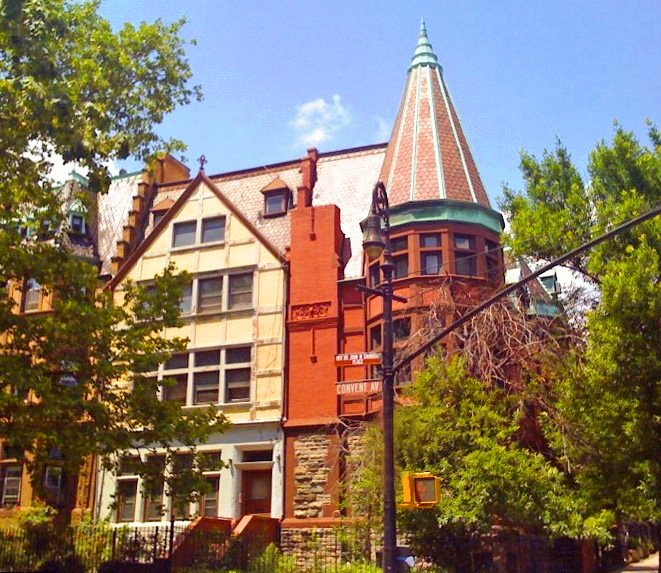 |
| photo harlembespoke.blogspot.com |
Throughout the 1870s and 1880s De Forest bought up sections of Alexander Hamilton’s estate, The Grange, and plotted streets with roomy homes for middle and upper-middle class families. De Forest’s son, William, Jr., joined in his father’s passion, building speculative housing and developing the area south of 145th Street in Harlem which would become known as Hamilton Heights.
The De Forests’ developments were well thought-out. In 1886 the Real Estate Record and Builders’ Guide commented that the area “will certainly have a strong distinctive character of its own, though bearing more resemblance to the suburbs of London than to anything in the vicinity of New York.”
In 1890 William De Forest, Jr. commissioned architect Robert Dry to design a picturesque row of quaint Queen Anne style private homes on Convent Avenue. Dry borrowed from English Tudor and medieval designs, hinting at half-timbered walls (without using timbers) and splashing the houses with stepped gables, diminutive dormers peeking from steep tiled roofs and projecting bays.
The row culminated in its showpiece: the corner dazzler at No. 336. Completed in 1892, the façade is dominated by a corner tower with a faceted conical cap. A wide mixture of materials – fieldstone, brownstone, terra cotta, copper and tile – combine to create an exuberant and delightful visual composite.
With the extension of the New York subway system into Harlem and the opening of the Lenox Avenue station in 1904, the real estate market began declining. In October 1912 the house was sold by one real estate operator, Elias A. Cohen, to another, Ennis & Sinnott.
By the Fall of 1941 the large residence had been converted to 12 furnished rooms and two apartments. Another conversion was done in 2001, the same year that the neighborhood was landmarked. The renovation resulted in a total of seven apartments – from studios to two bedrooms.
 |
| photo JC DeNiro & Assoc |
.png)
No comments:
Post a Comment